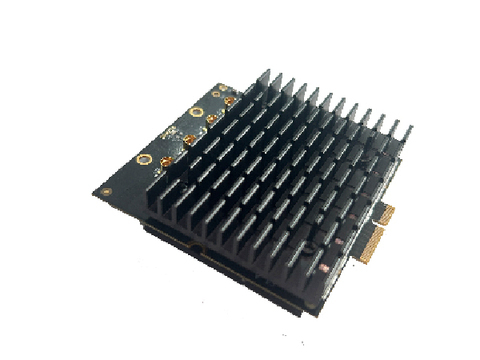From concept to reality: the development history and technical progress of WiFi 7/QCN9274

Wireless network technology is upgraded from generation to generation, which also drives up the growth of transmission speed. In recent years, the demand for high-speed transmission in AI and Metaverse, coupled with the huge connection demand of the Internet of Things, has driven the rapid upgrade of wireless network technology. Entering the WiFi 7 generation, wireless networks have also been announced. The transmission speed is 4.8 times higher than the previous generation.
In recent years, global Internet technology has developed rapidly. In addition to 5G and optical fiber networks, wireless networks are important Internet technologies for families and businesses. In the past few years, with the new crown pneumonia driving trends such as working from home and promoting audio and video streaming, coupled with chip shortages, WiFi has accelerated 6 is quickly upgraded to achieve a golden crossover with the previous generation WiFi 5 technology at the fastest speed.
The WiFi Alliance estimates that the total output value of the global WiFi market will reach US$4.9 trillion in 2025. The industry believes that WiFi 7 will begin shipping in large quantities this year and is expected to have a golden crossover with the previous generation WiFi 6 in 2025 and 2026, becoming the mainstream of wireless network technology.
In recent years, WiFi technology has continued to evolve, and with the support of governments of various countries, WiFi 6E and WiFi 7 both support 2. 4G Hz, 5GHz and the latest 6G Hz, and WiFi technology has entered the multi-band era.
Now, because WiFi 7 adopts multiple frequency bands, the transmission speed has been increased from the original WiFi 6’s 9.6Gbps to 46Gbps, an increase of 4.8 times, which greatly reduces the interference between devices and the delay of data transmission.
According to industry analysis, the rise of emerging technologies such as the large-scale AI computing model ChatGPT, the practical application of AR and VR in Yuanverse, etc., and the gradual popularization of smart home appliances with more functions have increased network demand. WiFi 7 can support the transmission needs of new technology development, watching 4K, 8K videos, online games without delay, and promote innovative applications such as smart factories.
WiFi 7, opening a new era
Wi-Fi is one of the most annoying success stories. Despite how ubiquitous this technology has become in our lives, it still gives people reasons to complain: for example, service is unstable or slow, or the network keeps going out. Wi-Fi reliability has an image problem.
When Wi-Fi 7 arrives this year, it will bring a new focus on improving the image. Each generation of Wi-Fi brings new features and areas of focus, often related to throughput—getting more bits from point A to point B. The new features in Wi-Fi 7 will usher in a new generation of wireless technology that is more focused on reliability and reducing latency, while still finding new ways to continue increasing data rates.
"The question we asked ourselves was, 'What do we do now?'" said Carlos Cordeiro, an Intel researcher and the company's chief technology officer for wireless connectivity. "What Wi-Fi really needed to do then was become more reliable... I think now we should be paying more attention to latency and becoming more deterministic."
Emerging applications are driving a renewed focus on reliability. Imagine a situation with a wireless factory robot. A worker suddenly walks in front of it and the robot needs to make an immediate decision. "It's not about throughput, but you do want to make sure your [data] packets get through the first time they're sent," Cordeiro said. In addition to industrial automation and robotics, augmented and virtual reality technologies and gaming will also benefit from faster, more reliable wireless signals.
Multi-link operation will make Wi-Fi more reliable
The key to Wi-Fi you can trust in the future is so-called multi-link operations (MLO: multi-link operations). "This is the signature feature of Wi-Fi 7," said Kevin Robinson, president and CEO of the Wi-Fi Alliance. MLO comes in two flavors. The first (and simpler) of the two versions allows Wi-Fi devices to broadcast data streams on multiple channels within a single frequency band. This technology makes the collective Wi-Fi signal more resistant to interference at specific frequencies.
However, what really sets Wi-Fi 7 apart from previous generations is that MLO allows devices to broadcast data streams across multiple frequency bands. For context, Wi-Fi uses three frequency bands: 2.5 GHz, 5 GHz, and as of 2020, 6 GHz.
Whether the MLO spreads the signal over multiple channels in the same band, or across channels in two or three bands, the goals are the same: reliability and reduced latency. Devices will be able to split the data stream and send portions of the data through different channels simultaneously (which reduces overall transfer time), or send copies of the data across different channels if one channel is noisy or otherwise compromised.
MLO isn't the only new feature in Wi-Fi 7, even if industry experts consider it the most notable. Wi-Fi 7's channel size will also increase from 160 MHz to a new maximum of 320 MHz. Larger channels mean greater throughput, which means more data can be transferred in the same amount of time. That said, 320 MHz channels will not be generally available. Wi-Fi uses unlicensed spectrum, and in some areas no contiguous 320 MHz block of unlicensed spectrum exists due to other spectrum allocations.
Wi-Fi 7 also includes another feature called puncturing in cases where a full channel isn't available. "In the past, let's say you were looking for 320 MHz somewhere, but right there, there was a 20 MHz interferer. You needed to think about which side to pick," said Andy Davidson, senior director of technology planning at Qualcomm. Prior to Wi-Fi 7, you were functionally stuck in about a 160 MHz channel above or below that interference. "With Wi-Fi 7, you eliminate interference ... and you still have a valid 300 MHz channel," Davidson said.
Attachment: Interpretation of WiFi 7 standards
Wi-Fi 7 is the next generation Wi-Fi technology standard, also known as the IEEE 802.11be standard. It is a further improvement on current Wi-Fi technology and aims to provide faster speeds, lower latency and better network performance.
Wi-Fi 7 technical features
1.Speed and spectral efficiency
Wi-Fi 7 will provide higher speeds, several times faster than the current Wi-Fi 6. The Wi-Fi 7 band will have a bandwidth of 320MHz and will utilize more wireless spectrum to achieve higher speeds and spectrum efficiency.
2.MU-MIMO and OFDMA
Wi-Fi 7 will continue to support multi-user multiple input multiple output (MU-MIMO) and orthogonal frequency division multiple access (OFDMA) technologies. MU-MIMO allows data to be transmitted to multiple devices simultaneously, while OFDMA splits the wireless spectrum into multiple subcarriers, allowing for greater spectral efficiency.
3.Low latency
Wi-Fi 7 will reduce transmission delays and provide a more instant connection experience. This is important for real-time applications such as gaming, video conferencing, and virtual reality to improve responsiveness and performance.
4.Security
Wi-Fi 7 will provide stronger security features to protect wireless networks from potential threats and attacks. This includes support for stronger encryption algorithms and authentication mechanisms to ensure the security and privacy of user data.
5.Energy efficiency
Wi-Fi 7 will introduce some energy-saving features to improve the energy efficiency of wireless devices. This will be especially helpful for battery-powered devices such as smartphones, tablets, and IoT devices, extending the battery life of these devices.
6.Compatibility
Wi-Fi 7 will remain backwards compatible with existing Wi-Fi technology, which means that users can connect to devices that support older Wi-Fi standards on devices that support Wi-Fi 7. This helps smooth the seamless integration between multiple new and old devices and enhances user experience and interoperability.
Wi-Fi 7 and Wi-Fi 6
Compared with Wi-Fi 6 and Wi-Fi 6E, Wi-Fi 7 has some important improvements and differences. If you carefully compare the three standards, the biggest difference is speed and bandwidth. Wi-Fi 7 offers higher speeds and bandwidth. Wi-Fi 6 has a top speed of 9.6 Gbps, while Wi-Fi 7 can reach higher transfer rates. In addition, Wi-Fi 7 can provide wider bandwidth by expanding the spectrum range, thereby achieving higher transmission performance.
In terms of spectrum efficiency, Wi-Fi 6E introduces a new 6 GHz frequency band to relieve spectrum pressure and provide a wider spectrum. Wi-Fi 7 also operates on the 6 GHz band, so there is no significant difference in spectral efficiency compared to Wi-Fi 6E.
As for latency, Wi-Fi 7 aims to reduce transmission delays and provide a more immediate connection experience. It will be optimized for low-latency applications to provide faster response times. In addition, Wi-Fi 7 has improved speed and bandwidth, while also focusing on the optimization of low-latency applications.
WIFI 7 Product----DR9274-5G QCN9274 CHIP

Features
■ Qualcomm Atheros QCN9274 for Industrial Grade;
■Maxim Tx power 20dBm per chain;
■ 4x 4 5G MU-MIMO, up to 5765Mbps physical data rate;
■ Support up to 4096-QAM;
■ M.2 connector;
■ PCI Express 3 .0 Interface
Applications
■ Commercial radio coverage
■ Forest fire protection engineering
■ Country coverage
■ Some special scene application
Email:sales4@wallystech.com








评论